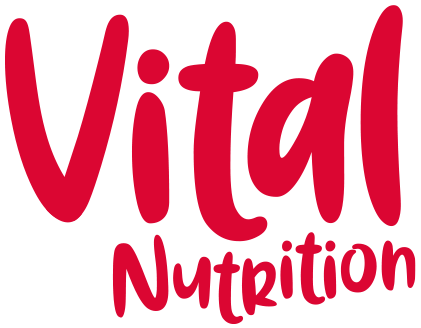We can do better with our fibre intake - here's how…
We all know that fibre is good for us. It keeps us regular, of course, but did you know that fibre is also an essential ingredient for a healthy heart, cholesterol balance, insulin and blood sugar regulation and hormone regulation? It may even help with weight loss.
Most of us don't get anywhere near the recommended 30g of fibre a day. The latest figures suggest that the average fibre intake for adults is 18g. We could do a whole lot better.
So, what does 30g fibre a day look like? Here's an idea:
Breakfast = small bowl or porridge + 1 small banana chopped on top = 11g
Lunch = bowl of lentil soup + 4 oatcakes + cheese = 12g
Dinner = home-made Bolognese (made with tinned tomatoes and lots of vegetables - a mix of peppers, onions, mushrooms, carrots), served with wholemeal pasta = 12g
Soluble and insoluble fibre
There are two types of fibre, soluble and insoluble, and we need both.
Soluble fibre is found in foods like fruit, vegetables, nuts and seeds, pulses and oats and helps to keep thing moving in the digestive tract, maintain a healthy balance of cholesterol and support hormone balance. This type of fibre also acts as a prebiotic to support our probiotics in the microbiome.
Insoluble fibre is what we would think of as roughage. Found in wholegrains, it is the indigestible fibre that adds bulk.
We need a balance of each to help support healthy. Here are some simple ways to help you increase your fibre intake:
Add a spoonful of milled chia or flaxseed to your day. Pop into porridge, sprinkle on soups or add a little to curry.
Eat porridge or overnight oats for breakfast. Top with nuts, seeds and fruit of your choice to get your day off to good start.
Don't peel fruit and veg. The skin of most plant foods is packed with fibre. Keep the skin on your carrots and parsnips, roast butternut squash without peeling and use the peel of citrus fruit to add a little zest (and extra fibre) to your meals. Cucumber, sweet potatoes, even kiwis can all be eaten with their skins intact.
Bulk up with pulses. Peas, beans and lentils are a great way to get an extra hit of fibre into your day. Chickpeas in curry, red kidney beans in chilli, lentil dal, bean soups, houmous and Puy lentil bolognese are just some easy ideas. Look out for ready-cooked pouches of beans and lentils for handy store-cupboard ingredients for a quick lunch.
Choose wholegrains. Opt for wholemeal pasta, wholewheat couscous, brown rice and wholemeal bread. If you are new to these foods, or it just sounds like a step too far, then look out for 50:50 versions of toast and bread for a step in the right direction.
Rotate your grains, The more variety the better. Choose jumbo oats, rye, spelt, buckwheat or quinoa flakes to make porridge, add to homemade breads or fold into a crumble topping.
High fibre fruit like pears, kiwi, figs, apples and berries add an extra pop of fibre to snack time.
Replace crisps with pea or bean snacks, or a little handful of nuts or trail mix.
Keep an eye on food labels and choose foods with at least 6g fibre per 100g.
Snack on veg sticks and houmous.
Eat fruit, don't drink it. Fruit juice is a poor source of fibre compared to eating fruit.
If you need a little extra, look out for psyllium husks in your local health food store. These can be sprinkled over yoghurt, or added to soups, granola or porridge for an extra little help in the fibre front.
This blog post first appeared as my column in The Irish News on Saturday 5th February 2022.

